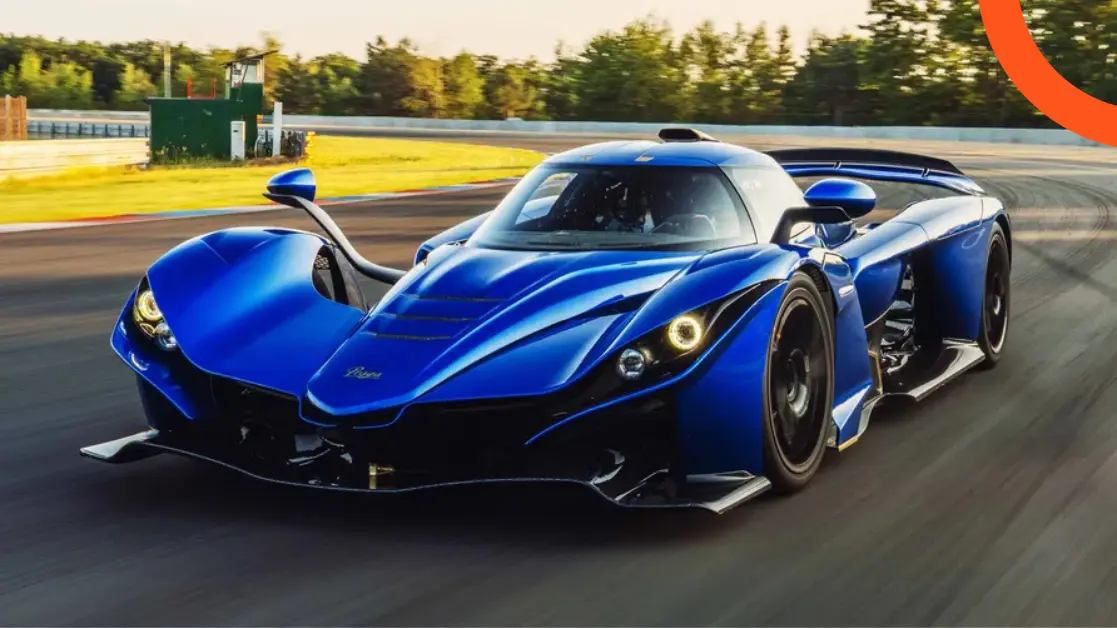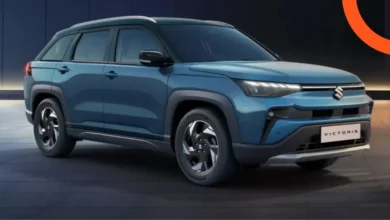Praga Bohema Supercar Sets Records with 982 kg Lightweight and 700 HP
Supercars occupy a high rank in the automotive world, often associated with incredible power, hybrid technologies, or impressive figures exceeding 1,000 horsepower. However, the Praga Bohema came to dispel these perceptions, focusing instead on a more impactful factor: lightweight design and the pure driving experience. With a weight of just 982 kilograms and 700 horsepower, Bohema succeeds in achieving what more famous competitors could not: a unique sensation and direct connection between the driver and the machine.
Race-Inspired Design
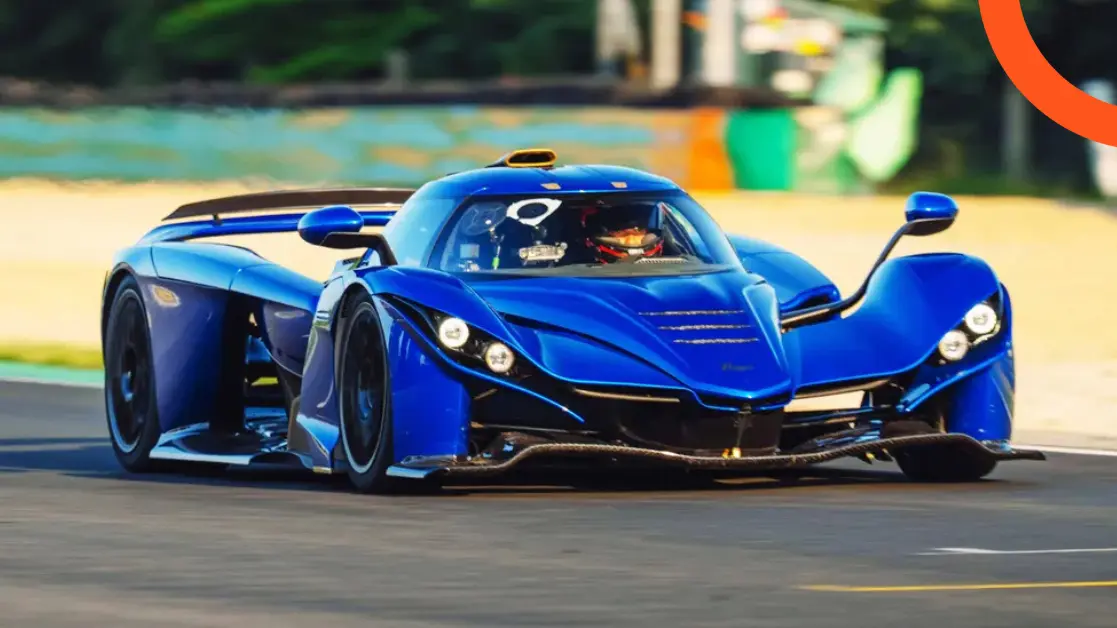
At first glance, Bohema’s unique identity inspired by Le Mans prototype cars stands out. The low roofline nearly reaches knee level, and the uniquely hinged doors open like a side flap from the narrow cockpit, all contributing to an exceptional dynamic appearance that diverges from traditional standards of beauty. The car’s aerodynamic lines and insect-inspired touches create a striking presence wherever it appears. Praga does not aim to create a beautiful car in the classical sense; instead, it focuses on a bold and unique language aimed at attracting attention and emphasizing the aggressive dynamic character of the car.
The meticulous design details underscore a clear focus on track usage, from the massive rear wing measuring 5 feet to the multiple aerodynamic fins and air intakes aimed at enhancing airflow and improving stability and grip at high speeds. The design gives a sleek sensation that brushes the boundaries of eccentricity, while achieving unique aerodynamic effectiveness that is hard to match.
Luxury Driving Cabin
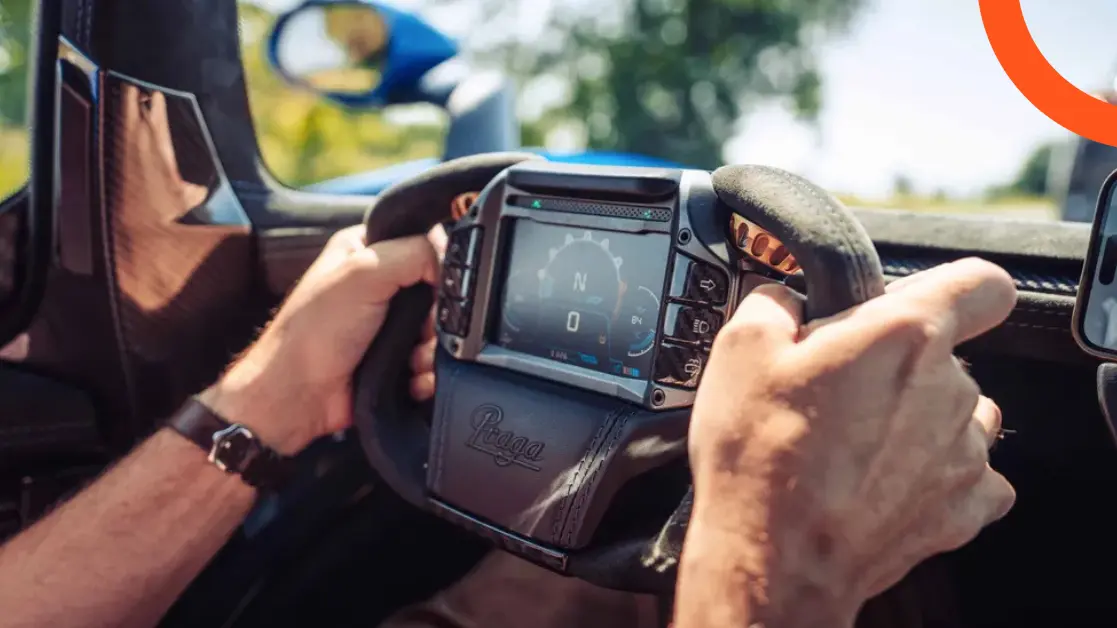
When you approach to enter the Bohema, you’ll immediately discover that functional ergonomics dominate every aspect of the cockpit. Sitting in the seat is the first challenge, as the driver sits on the outside before tucking his legs into the narrow cell, closing himself into a world of carbon fiber. Removing the steering wheel is necessary at times to enter or exit, adding a genuine racing flair even in daily use details.
Despite the thrilling atmosphere, Praga hasn’t overlooked the need for some comfort and practical applications. There are:
- An effective air conditioning system that pumps cold air.
- Adjustable cup holder seats, with adjustable pedals and steering wheel.
- Central screen and hidden USB connections that don’t add significant weight.
- A mobile phone holder atop the central column, and a side pocket for wallets near the left leg.
- A water bottle holder in the central column that can also accommodate a Bluetooth headset for those who want music while driving.
All these smart additions do not add weight that harms the car’s primary goal, while meeting some comfort requirements for daily needs, making Bohema far from the image of impractical racing cars in real life.
Power and Performance
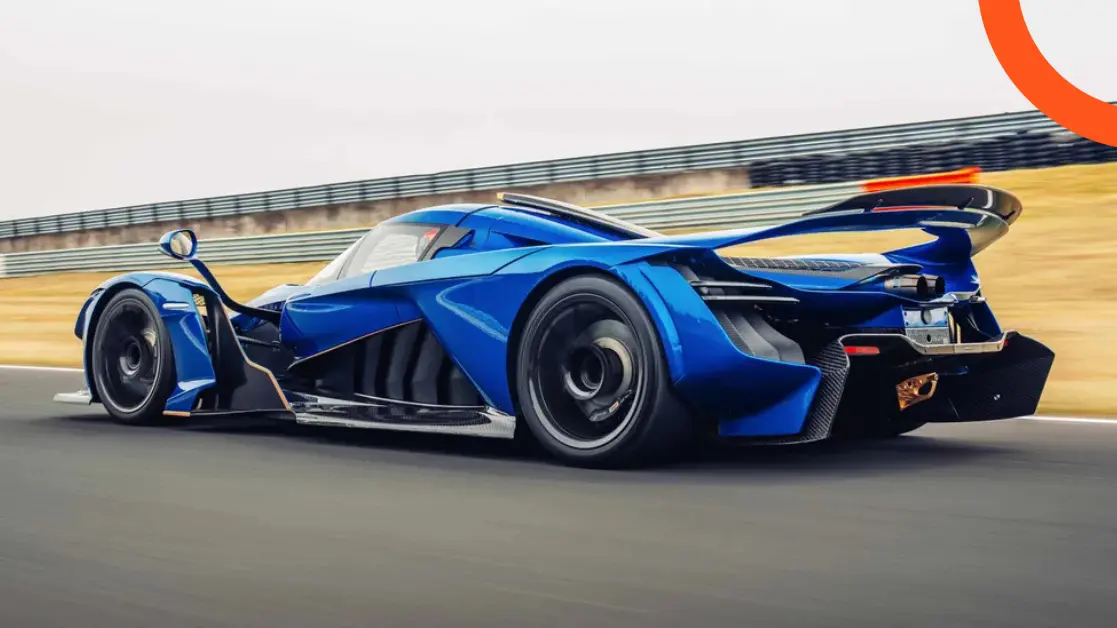
| Specification | Value |
|---|---|
| Unladen Weight | 982 kg |
| Engine Power | 700 hp |
| Engine Type | VR38DETT V6 Twin Turbo (from Nissan GT-R R35) |
| Transmission | Sequential 6-speed with electronic clutch control |
| Maximum Torque (unspecified numerically) | Extremely high thanks to turbo tuning |
| Power to Weight Ratio | Less than 1.5 kg per hp |
| Aerodynamic Downforce | 950 kg at 155 mph (250 km/h) |
| Tires | Michelin Cup 2 R |
| Standard Lap Times | Most: 1:35.12 min Brno: 2:01.67 min Slovakia Ring: 2:03.45 min |
The VR38DETT V6 engine sourced from the Nissan GT-R gives Bohema a distinctive character, having been modified by Litchfield in the UK to meet extreme performance requirements. The transmission combines manual electronic control via paddles behind the wheel with an electronic clutch responsive to performance demands, with the option to use a manual knob in race mode. This system allows for quick, smooth shifts and an engine sound full of life and edge, especially at high speeds.
It’s worth noting that the car does not rely on hybrid drive systems or advanced stability algorithms; instead, it prefers to utilize pure mechanical elements, making the driver the crucial and defining factor in the driving experience on the track or the road.
Weight Reduction: The Key Element in Bohema’s Philosophy

Low weight represents a real turning point in the Praga Bohema experience, as it is lighter than most competitors, even when comparing horsepower figures among them. Weighing less than a ton, the car creates a driving experience primarily based on agility and dynamic rebound in corners, with a direct and lively feel to any change in power balance and stability.
Every element in the Bohema system has been carefully chosen and developed to reduce weight:
- The frame is made entirely of carbon fiber, with a cabin resembling a safety cage in racing cars.
- Sequential transmission is 70 kg lighter than traditional systems.
- Unnecessary features have been removed (e.g., multiple cup holders and large luxurious sound systems).
- The interior design focuses on essentials only, to enhance simplicity and reduce complexity.
This lightness translates into exceptional performance in speed, steering, and braking, as slight pressure from the driver is enough to change the car’s direction or push it firmly in turns, giving the driver the confidence to attack corners at speeds once thought impossible.
Balancing Daily Use and Track Experience
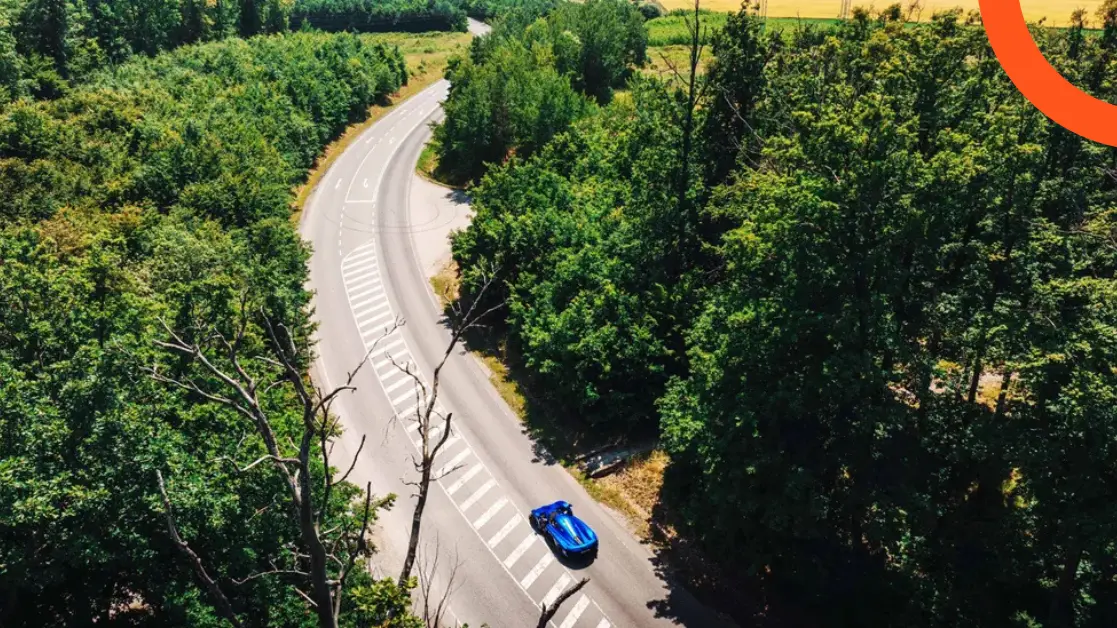
Most supercars face the dilemma of balancing daily practicality with extreme track performance, often leading to compromises that affect the car’s core character. Bohema addresses this challenge from a candid perspective; it is a pure racing car designed for road use, instead of being an ordinary road car modified for tracks.
On public roads, driving the Bohema may initially seem exhausting, especially in cities or at low speeds, as the transmission requires some manual manipulation, and there is no automatic driving system to ease the task for beginners. However, the car provides effective climate control and a suspension system with dual springs and Ohlins dampers that offer some smoothness on winding and cobblestone roads, even if they are not entirely user-friendly.
On the tracks, the Bohema transforms into a precise tool for smashing records, with a manually adjustable suspension system that can be altered within minutes during laps, and it provides quick detachment and reinstallation of panels for rapid transitions between road and track, showcasing practical engineering-focused on dexterity and control.
Technical Characteristics and Aerodynamic Systems
Bohema primarily relies on achieving outstanding stability on the track through aerodynamics, as the car generates an aerodynamic downforce nearly equal to its total weight (950 kg at 155 mph), effectively doubling its grip on asphalt at high speeds, which directly reflects in braking power, cornering, and quality of adhesion.
The aerodynamics systems in the car feature several sophisticated components:
- An effective large rear wing.
- Integrated underbody air ducts within the chassis.
- A massive rear diffuser ensuring maximum downforce.
- Side and upper intakes for cooling the engine, brakes, and transmissions.
These technologies represent a rare harmony between aerodynamic optimization and exterior design, with every part of the car system serving adhesion and performance, without superfluous decorative elements.
Practical Driving Experience: Between Adventure and Control
Driving the Bohema on the road is not an ordinary or routine experience; it is an extreme blend of live sensations and a high dose of adrenaline. Every ascent or descent in the car carries a sense of adventure, and the low chassis design imposes an unmistakable presence in public settings or even while waiting at traffic signals.
The driver enjoys relatively excellent front visibility thanks to the long exterior mirrors that help maintain safety when changing lanes. Despite the absence of direct rear visibility, the car’s structural flexibility and customizable driving setup provide a driving experience that combines professionalism and fun. The sound emitted by the engine is a blend of roughness and deep growl, almost entirely different from the Nissan GT-R’s sound, reflecting the spirit of adventure for every user, especially during strong acceleration and testing limits of traction.
The relationship between low weight and horsepower highlights itself spectacularly during launches, where the car’s acceleration surpasses most of its competitors without relying on electrical pull systems or four-wheel drive. Here lies Bohema’s secret; it does not merely challenge physics by figures but gracefully navigates between them with almost unfamiliar speed.
Track Performance: Shattering Records and Distances
Bohema has tested its capabilities on three of Europe’s most famous tracks: Autodrom Most, Brno Circuit, and Slovakia Ring, proving with numbers that it is not just a show car, but an actual champion with proven results. At every stage of the journey, the suspension system was adjusted, with panels raised or lowered within minutes, launching the car into a record timing experience on standard Michelin Cup 2 R tires.
The incredible results were not a coincidence, as Bohema outperformed the Porsche GT3 RS itself by seconds, not just fractions of a second, which is the category known for its dominance on legal road vehicle records. Bohema recorded 1:35.12 minutes in Most, 2:01.67 minutes in Brno, and 2:03.45 minutes in Slovakia Ring, affirming its leadership not only in horsepower but also in weight efficiency and precise dynamic setup.
The track driving experience was exceptional, as drivers and test guests discovered that Bohema does not rely on protection systems or electronic interventions during turns or launches; everything is left to manual feel and human precision. This leads to a higher attachment to the car, granting the driver immediate and realistic feedback on every decision or error, requiring a high skill level to extract all the car’s potential.
Practical Equipment and Comfort
Although Bohema is primarily a racing car, the Praga team insisted on not overlooking some necessary touches of comfort to make the car suitable for daily use. The engine is suspended on special mounts to reduce vibrations and sound entering the cabin, making it possible to cover long distances without the need for hearing protection or excessive fatigue.
Practical features of the car include:
- A storage capacity of around 50 liters per bag on both sides, sufficient to carry travel essentials or race kits.
- Easy manual height adjustment of the suspension system, without needing a professional crew, allowing quick transitions from asphalt roads to the track.
- Presence of USB charging ports and functional holders for phones and drinks.
- Notable reduction in temperature levels inside the cabin thanks to insulation systems and carbon fiber.
These practical touches allow Bohema to transition from a specialized racing car to a vehicle capable of meeting the challenges of daily life without great hassle, at least for those accustomed to its details.
Negatives and Challenges in Usage Experience
Bohema is not an ideal car for everyone; those who prefer easy-driving cars or helping technology systems will find it challenging to adapt to the demands of this supercar. Key challenge points include:
- The sequential transmission is not quick to respond at city speeds or in traffic, and it may feel stubborn to beginners.
- The large turning angle makes maneuvering in tight areas difficult.
- Driving on uneven roads causes strong rebounds due to the stiffness and low height of the suspension system.
- Absence of rear visibility and lack of a dedicated camera system.
- High driver focus is required to avoid errors, especially when driving at high speeds or on unpaved surfaces.
Bohema requires a high level of skill and passion for sports driving, making it not ideal for those looking for absolute comfort or family-friendly usability. However, it represents an exceptional choice for driving enthusiasts seeking a more involved experience and less reliance on electronic systems.
Target Audience and Competitors
Praga Bohema does not target everyone; instead, it focuses on a narrow segment of enthusiastic drivers capable of appreciating its value and characteristics. Owners of this category of supercars see Bohema as a symbol of uniqueness and authenticity in driving. Conversely, its competitor, the Porsche GT3 RS – known for its high usability both on the road and the track – finds itself philosophically facing Bohema, which prefers mechanical purity and weight reduction at the expense of abundant comfort systems.
Bohema’s fundamental message remains to outperform competitors through a practical concept of a legal race car for road use, meaning it is aimed directly at specialized car enthusiasts and adventurers seeking differentiation and a pure driving experience rooted in racing origins.
FAQs
What distinguishes Praga Bohema from other traditional supercars?
The standout features of Bohema revolve around a deep focus on low weight and pure driving experience without relying on complex electronic systems. It offers the driver a true joy of driving and a mixed feeling of excitement and control, far from traditional digital influences.
What type of engines does Bohema use, and what are its notable technical characteristics?
Bohema relies on the renowned Nissan GT-R VR38DETT V6 twin-turbo engine, specially tuned to reach 700 hp. It transfers power to the wheels through a six-speed sequential transmission with electronic clutch, enhancing the car’s responsiveness and achieving amazing acceleration.
How does weight reduction impact the practical performance and grip of Bohema?
The low weight gives Bohema exceptional cornering ability and responsiveness, improving braking performance and reducing the need to rely on complex suspension or drive systems. All this translates into a direct and lively sensation on the road and the track.
Can Bohema be comfortably used for daily driving?
Although Bohema is designed primarily for the track, its practical features, such as the air conditioning system, comfortable seats, and storage capacity, allow for reasonable daily use, provided one adapts to the transmission system and the narrow cockpit flexibility.
What records has Bohema achieved on the tracks?
Bohema has outperformed many traditional competitors, recording a time of 1:35.12 minutes in Most, 2:01.67 minutes in Brno, and 2:03.45 minutes in Slovakia Ring, significantly surpassing the Porsche GT3 RS under the same conditions.
What distinguishes the driving experience in Bohema from other high-tech sports cars?
The driving experience in Bohema is characterized by vivid and direct feelings, far from computer interventions and stability control programs, providing the driver with a stronger connection and better control over the car’s outputs and behavior.
What challenges might a driver encounter when driving Bohema?
Among the main challenges: difficulty entering and exiting, difficulty maneuvering in tight streets, the need for high concentration due to the car’s immediate response, and stiffness in some comfort aspects on rough roads.
Does the car support legal use on public roads, or is it exclusively for tracks?
Bohema is a licensed vehicle for use on public roads and meets the required safety regulations and technical conditions, while retaining its core identity as a racing car also prepared for everyday use for those with an advanced driving level.
How does Bohema compare to cars like Porsche GT3 RS in terms of performance and practicality?
The GT3 RS stands out for its ease of use and high practicality, while Bohema focuses on daring performance, weight reduction, and a direct mechanical connection with the driver, giving it an edge on the track at a relative cost of comfort during daily usage.
What type of tires are used, and can they be easily swapped when transitioning from road to track?
The standard tires are Michelin Cup 2 R, which are semi-sport tires approved for use on roads and tracks. They can be easily swapped thanks to the design of the suspension system and the ability to manually lift the car within minutes.
Summary
Praga Bohema represents a new chapter in the world of supercars by blending absolute weight reduction with pure horsepower, adopting a philosophy of pure mechanical design that redefines driving pleasure. The car stands out with a unique race-inspired design, a minimalist and practical cabin, and advanced suspension and aerodynamic systems that enable it to shatter records on Europe’s most famous tracks. Despite its clear focus on track performance, Praga has not neglected to equip the car with practical elements and comfort features that make it usable daily within a defined framework. Bohema is not a car for everyone, but it is an exceptional choice for adventure enthusiasts and skillful drivers seeking direct control at the heart of the race, making it a modern legend in the world of hyper-sport cars.
